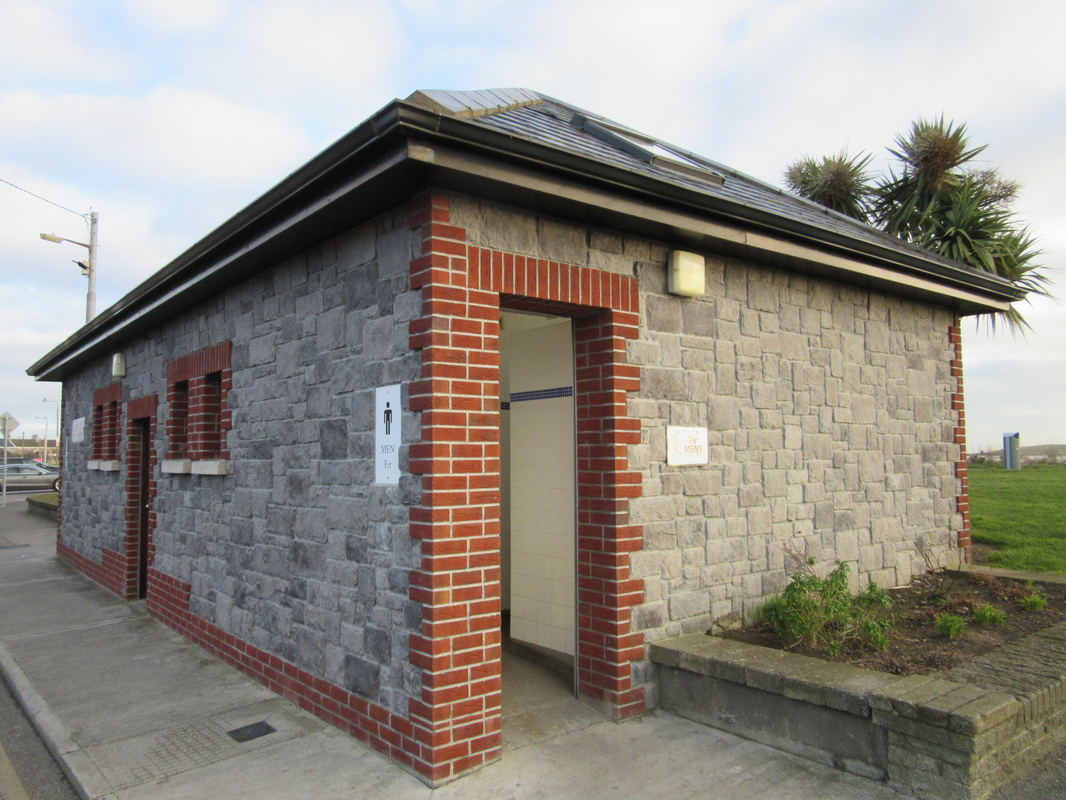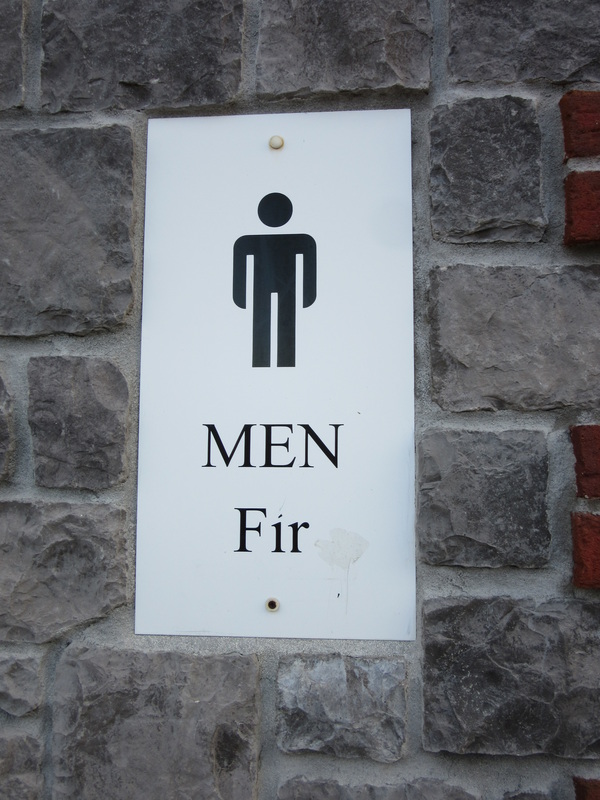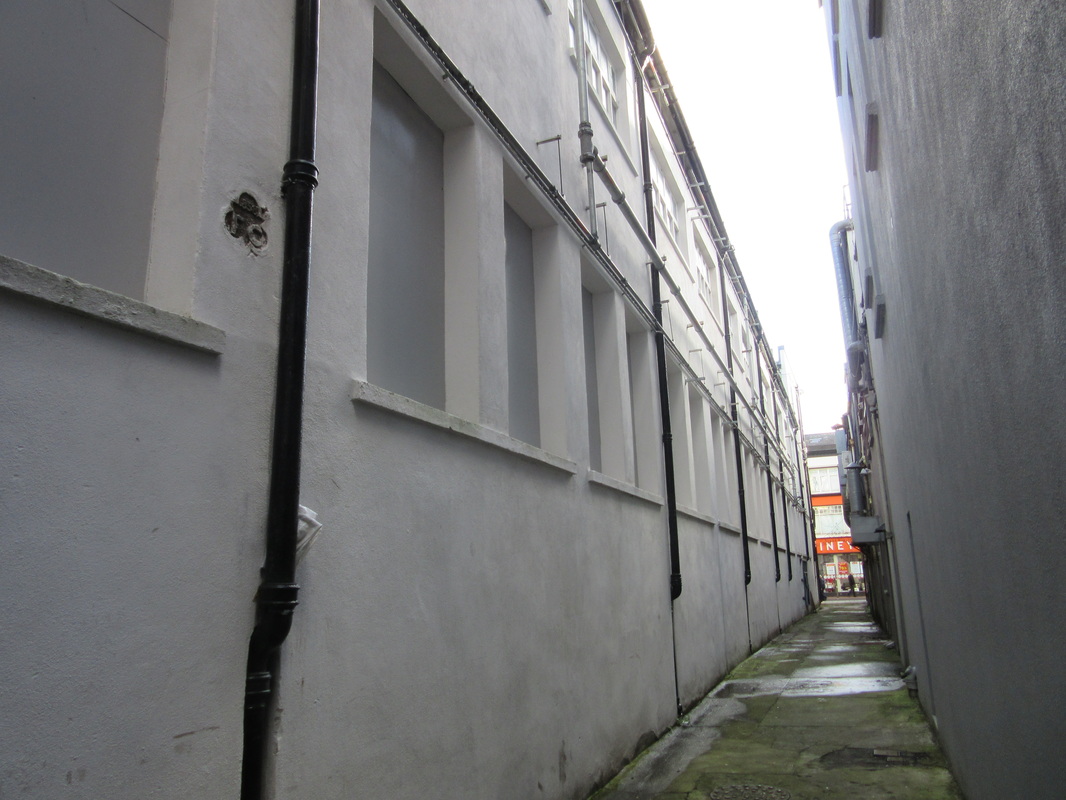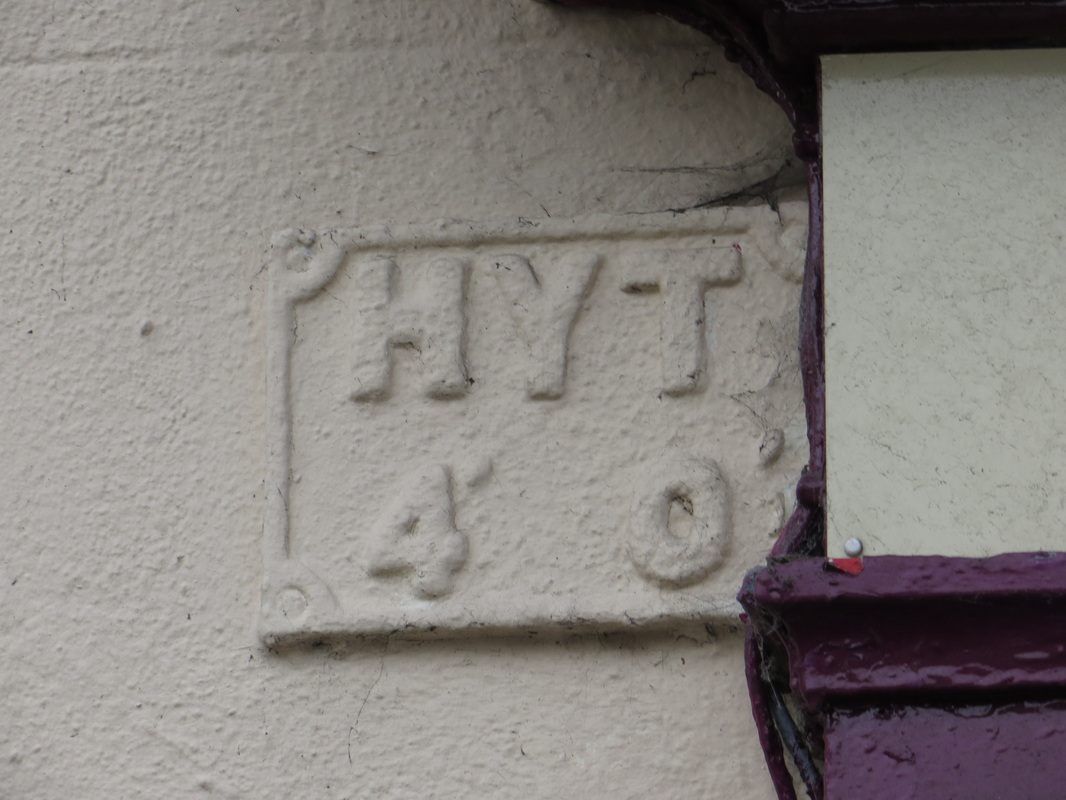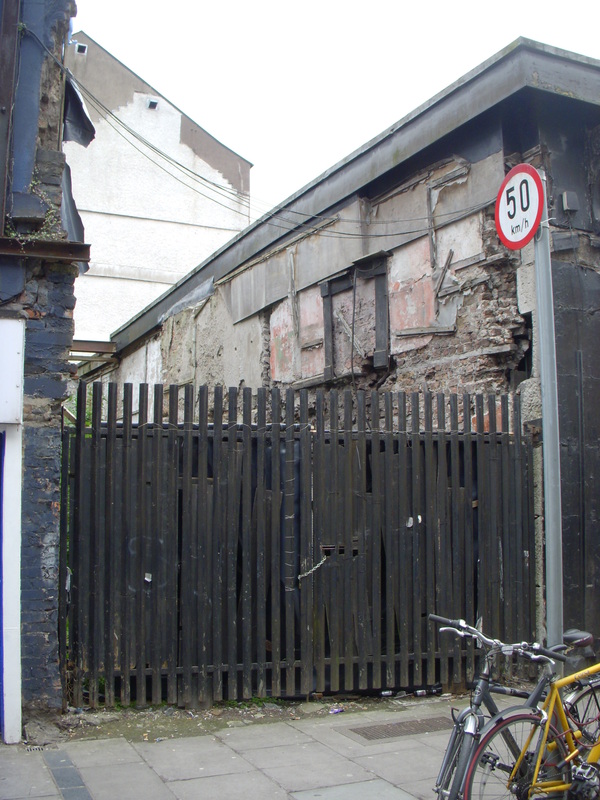| I write in the margins of my books – generally notes to cross-reference to other dots of information. I love when I buy a second-hand book to read the notes or inscriptions of others. It is a bit similar to the mantra that we are only custodians of our houses/buildings and are holding them for the next generation. I like to read what the previous generation might have added to the book. I am a fan of Bookcrossing and very much appreciate public realm works so I was very well impressed with Liverpool One for their book swap chill zone. |
|
0 Comments
Last week, having a morning meeting in North County Dublin, I spend the night in Skerries and had an enjoyable hour the following morning walking around the town and beach – expect more from there than this blog entry.
There are four signs on the toilet block on the beach road and they did provide some opening for thought: Irish appears more consistent than English What are ‘Mens’? Who proofread that sign? Am I the first person to read the sign and be puzzled by ‘Mens’? I had thought that the Irish on public signs needed to be at least as large and prominent as the English – on this occasion, size does not appear to equal right. Angry Old Man - 4 |
| Last year, I took a photograph of the Obelisk Monument outside Drispsey. There was no fingerpost sign. Exactly two weeks ago, POF was driving past when he noticed the sign saying: Radharc Luíocháin AMBUSH SIGHT It was not until the following Monday that I was able to get there. In that time, a replacement sign had been erected. The English had been corrected. Maybe when I pass the road next, they may also have corrected the Irish version. | “Radharc” translates as ‘Sight’, ‘Vision’ or ‘View’. |

Do they get sent to someone or are they kept at City Hall?
Are they like Christmas cards, that one throws out a few weeks later? Or are they kept for a while, and then thrown out when covered in dust.
Is there someone who reads all the messages?
Or is the purpose a benefit to the citizens of Cork in allowing them to pen their expressions?
I do not know the answers to any of these questions.
Nearly two years ago, I noted the Fire Cock sign on the then Moderne building. Some guidance from The Oracle as to the use of the FC markers followed by the Fire Hydrant to the now yellow H.
Following on from some recent hopper finds, I have been looking upwards. Yesterday, I went down Elbow Lane tempted by some more hoppers only to find a F.C. plaque that had escaped me upto now.
That brings the total to 91 – until I find another in hiding.
 2014.11.21
2014.11.21 Last September, I was early for a meeting in Mitchelstown so stopped to walk to St. Fanahan’s Well. As you might have gathered from previous posts, Holy Wells intrigue me – the possible incorporation of Pagan rituals in Christian religious practices; the cures believed to be as a result of his intervention; and the continued observance of the tradition.
In September, it was a pleasant morning walk down the tree lined path and around the well.
Last Friday, driving back from Co. Kildare with a head cold after a long tiring day, made longer by road works diversions, I stopped again at St Fanahan’s Well – it being within seven days of the feast day. From the time I started walking down the path to my return, I passed about ten people – this being at about 6.00 p.m., dark and wet.
The straightness of the path, especially when lit, is a sight. The tall trees that surround the Well area gathered the soft rain into larger drops which fell from the trees to give the sound of heavier rain that actually fell.
I walked around the path clockwise as practised by those there before me, but the prayers and rosary are not of my religious persuasion so were not said.
The tall straight trees call out to be touched.
Before the M8 Mitchelstown by-pass, it must have offered an extremely peaceful and atmospheric chill-out time. The road traffic noise did impinge on my efforts to clear the head.
Derelict sites do drag down adjacent properties and the city in general. It is unfortunate that Cork City Council allows so many derelict sites to exist and continue to deteriorate in the city.
If they are afraid to use the power to compulsorily purchase the sites, they could take lessons from Limerick City Council on how to transform derelict sites on a temporary basis.
Some time after, I came across this sign in Clonakilty and was introduced to another word that was new to me – ‘Hireling’.
It is a bad day when I do not learn something new.
“Hewitt’s distillery, until it amalgamated with the Cork Distilleries company, was in Watercourse Road. Murphy’s Brewery was established in 1854……in the Watercourse Road area situated on the site of an old Foundling Hospital” |
Or, on the assumption that the sign on the Academy St/Faulkner’s Lane site is the most recent, maybe Cork City Council have realised their error and have correcting the spelling.
Or maybe, it is just a further example of streetsigns not being consistent and adding a bit of variety, spice and debate to life.
I am more and more convinced that there is enough anomalies and inconsistencies to warrant a separate section on the website.
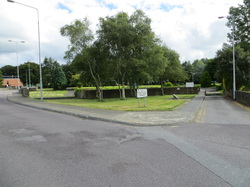
One could say that it the work that he is being paid to do and is that not reward enough – no further recognition is required.
But one says thank you to a shop teller – most of the time.
I found this plaque refreshing that enough local people thought highly enough of Fran Cleary’s work that they wished to record a ‘thank you’.
The enhancement of self-worth in just hearing these two words may them so valuable.

It dealt substantially with street signage but other nuggets of information were also found.
Towards the end we arrived at Tuckey Street and Tom stopped to talk about this sign that I had photographed some months ago.
He understands that the sign was originally on the building on the corner of Grand Parade and Tuckey St which, I understand burnt down, and now forms part of Bishop Lucey Park. This is consistent with the current siting of
the sign – both in terms of height on building (at shopfront height is rather low) and also in respect of position within the street (signs were generally at the beginning and end of streets and not in the middle).
He pointed out details, some of which I had not observed, which indicates that the sign-writer may not have been very experienced:
- For each of the three lines of text, there are three lightly scored lines, similar to what I recall from primary school to get our proportions for letters correct
- The first row appears reasonably well set out but an ability to appropriately set out the second row was beyond the writer,
- The gap between ‘E’ and ‘T’ in ‘STREET’,
- The fancy tail to the ‘U’, and
- The odd ‘6’.
Reading this back, it does make it look like an uninteresting walk and talk. That is so far from the truth.
| Although I would be more familiar with Summerhill North, I understood that both Summerhill North and Summerhill South were exactly that – Summerhill – a single word with no gap. Similarly Windmill has always been one word. I cannot recall ever using them as two words consecutively in that order. But someone obviously does not agree with me. That they are both evident in one photograph only makes the revised spelling more striking. |
Author
From Cork.
Old enough to have more sense - theoretically at least.
Archives
May 2024
April 2024
March 2024
January 2024
December 2023
October 2023
August 2023
July 2023
June 2023
December 2022
November 2022
October 2022
September 2022
August 2022
July 2022
June 2022
March 2022
November 2021
June 2021
May 2021
January 2021
December 2020
July 2020
June 2020
May 2020
April 2020
March 2020
January 2020
December 2019
November 2019
September 2019
August 2019
July 2019
June 2019
May 2019
April 2019
March 2019
January 2019
November 2018
September 2018
August 2018
July 2018
June 2018
May 2018
April 2018
March 2018
February 2018
December 2017
November 2017
September 2017
August 2017
July 2017
May 2017
April 2017
March 2017
February 2017
January 2017
November 2016
October 2016
September 2016
August 2016
July 2016
June 2016
May 2016
April 2016
March 2016
February 2016
January 2016
December 2015
November 2015
October 2015
September 2015
August 2015
July 2015
June 2015
May 2015
April 2015
March 2015
February 2015
January 2015
December 2014
November 2014
October 2014
September 2014
August 2014
July 2014
June 2014
May 2014
April 2014
March 2014
February 2014
January 2014
December 2013
November 2013
October 2013
September 2013
August 2013
July 2013
June 2013
May 2013
April 2013
March 2013
February 2013
Categories
All
Accuracy
Arts
Books
Branding
Cavan
Cemeteries
Clare
Commemorate
Cork
Dated
Donegal
Dublin
Economy
England
Fermanagh
Gaeilge
Galway
Ghostsigns
Graffiti
Grammar
Help
Heritage
Holland
Humour
Kerry
Kildare
Laois
Leitrim
Limerick
London
Longford
Marketing
Mayo
Me
Meath
Northern Ireland
Offaly
Old Ads
Old Shops
Other Blogs
Plaque
Politics
Public
Punctuation
Religion
Riddle
Roscommon
Scotland
Sculpture
Sligo
Spelling
Sport
Stickers
Street Art
Submission
Tipperary
Tweets
Waterford
Westmeath
Wexford
Wild Atlantic Way
Blogs I Read & Links
Head Rambles
For the Fainthearted
Bock The Robber
Póló
Rogha Gabriel
Patrick Comerford
Sentence First
Felicity Hayes-McCoy
140 characters is usually enough
Johnny Fallon
Sunny Spells
That’s How The Light Gets In
See That
Tea and a Peach
Buildings & Things Past
Built Dublin
Come Here To Me
Holy Well
vox hiberionacum
Pilgrimage in Medieval Ireland
Liminal Entwinings
53degrees
Ciara Meehan
The Irish Aesthete
Líníocht
Ireland in History Day By Day
Archiseek
Buildings of Ireland
Irish War Memorials
ReYndr
Abandoned Ireland
The Standing Stone
Time Travel Ireland
Stair na hÉireann
Myles Dungan
Archaeouplands
Wide & Convenient Streets
The Irish Story
Enda O’Flaherty
Cork
Archive Magazine
Our City, Our Town
West Cork History
Cork’s War of Independence
Cork Historical Records
Rebel Cork’s Fighting Story
40 Shades of Life in Cork
Roaringwater Journal





